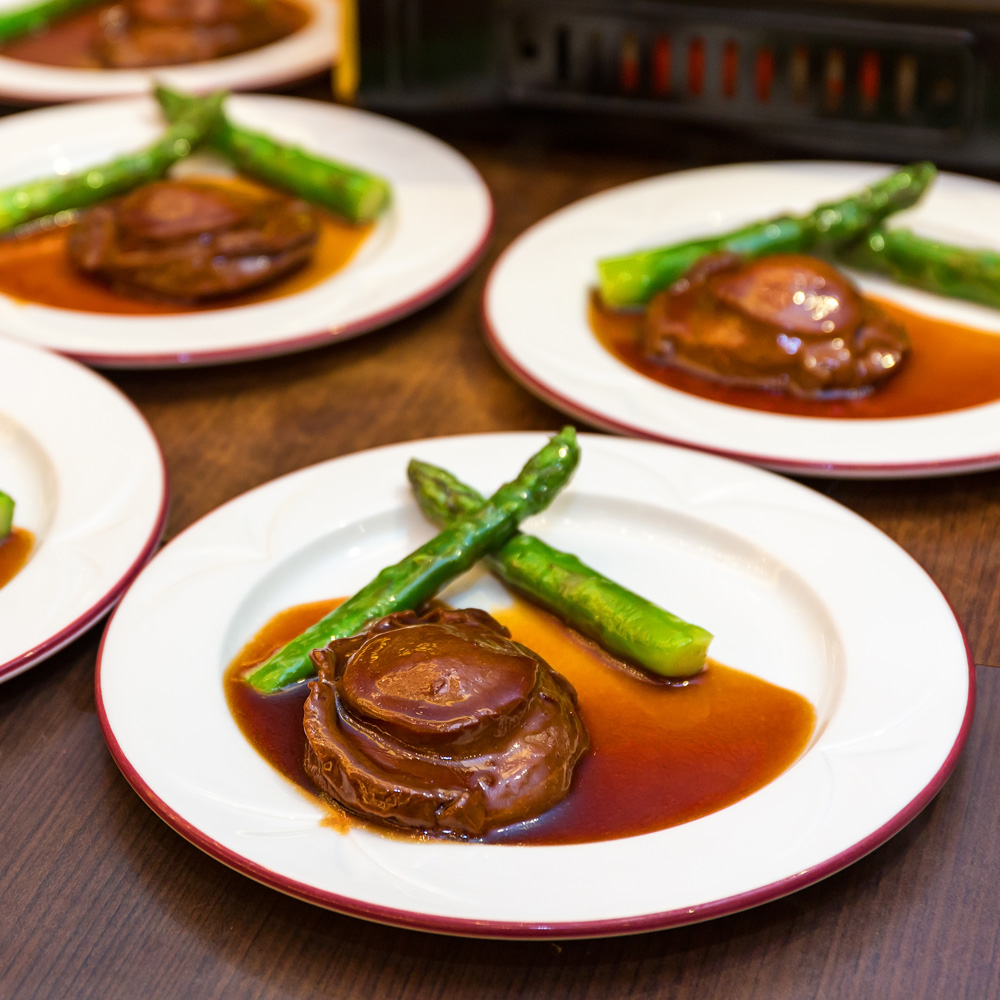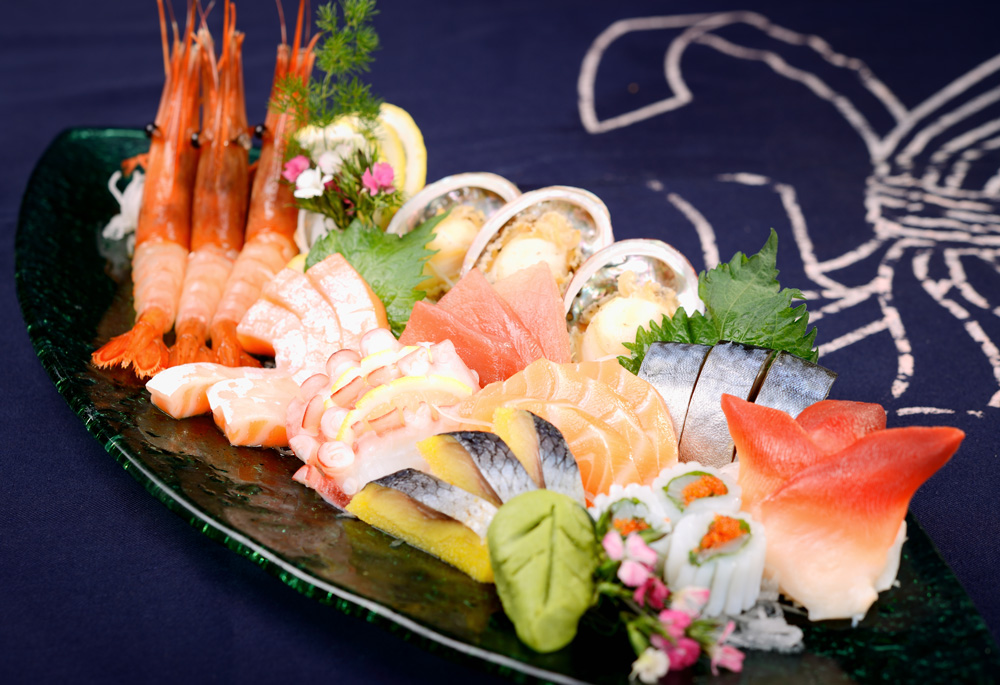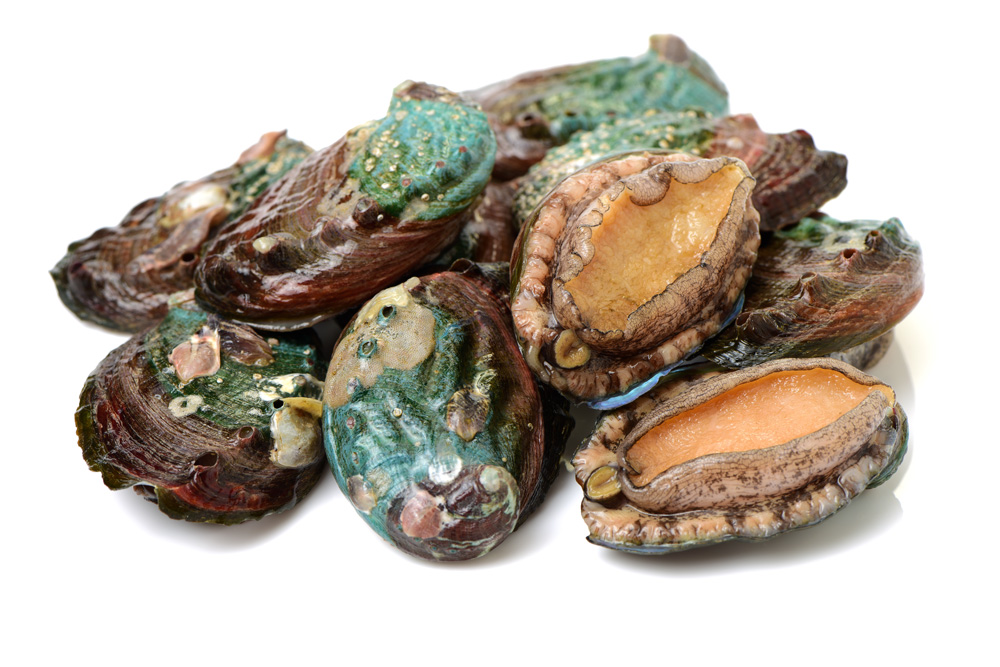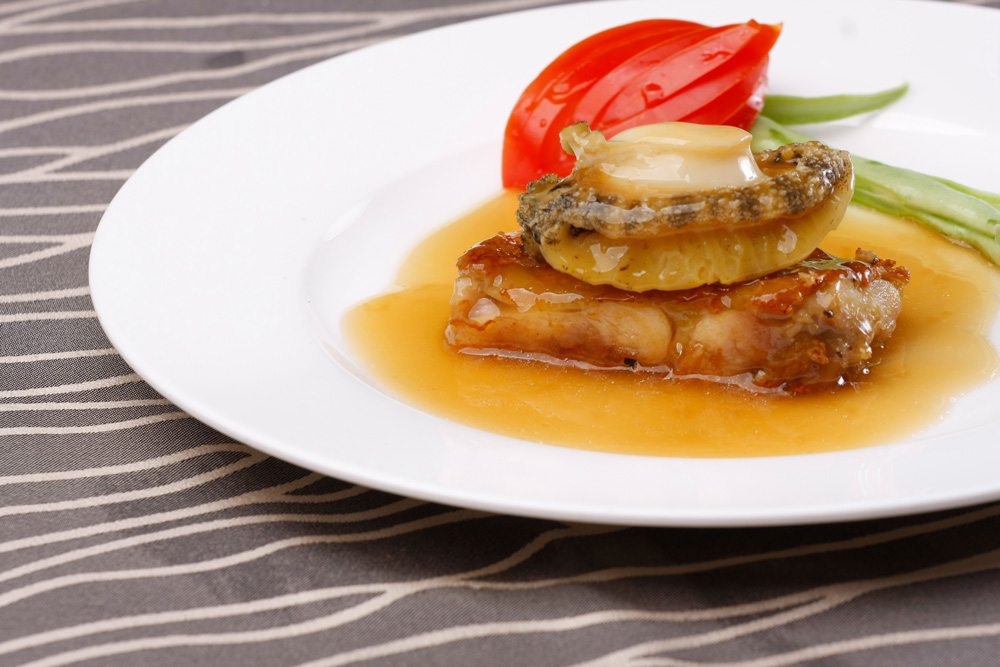Abalone, a treasure from the sea, prized by the Chinese for its special properties which benefit health and as a tasty treat during Chinese New Year celebrations.

Abalone is a large type of sea snail which is held in high regard by the Chinese. This delicacy is widely eaten during special occasions, particularly during the Lunar New Year period but it commands a high price because of the difficulty of the supply and the decreasing numbers of wild abalone available. It has, therefore, become a status symbol in Asia, a way to express wealth and importance.
The shells of abalones have a low, open spiral structure, and are characterized by several open respiratory pores in a row near the shell’s outer edge. The thick inner layer of the shell is composed of nacre (mother-of-pearl), which in many species is highly iridescent, giving rise to a range of strong, changeable colours, which make the shells attractive as decorative objects, particularly in jewellery, and as a source of colourful mother-of-pearl.
Abalone was renowned as having special qualities as far back as the Ming Dynasty (1368 to 1644) where it was thinly sliced and stir-fried or put into chicken soup with bean curd by the chefs for consumption by the imperial family. It was a highly regarded food item and was considered an aphrodisiac. Traditional Chinese medicine practitioners used the warming and cooling nature of foods to balance the body’s yin and yang – to prevent and treat disease, the abalone is considered a heating food.

The Japanese became adept at drying the mollusc as a way to preserve and transport them easily and these were imported into China in large numbers. About two hundred years ago a reliable method of food preservation was conceived with the idea of using bottles and cans to prolong the life of food, abalone was put into cans which increased availability and consumption.
Female abalone can produce millions of eggs each year, they release their eggs into the water, where they are fertilised by sperm released by the male abalone. The fertilised eggs hatch into organisms called larvae. After about a week (depending on water temperature), the tiny larvae develop into small juveniles (often called ‘spat’) and settle onto rocks.

Abalone take about four years to reach a legal size for collecting, which gives females at least two spawning seasons before they can be taken by fishers. Juveniles feed on microscopic algae but when they reach about 5 mm in length they start feeding on larger species of algae. There are more than one hundred different species of abalone, they live at different depths and consume different species of algae and seaweed.
One of the negative consequences of economic and social growth has been that abalone have been decreasing in numbers, and in some cases have become endangered, because of unsustainable resource extraction and environmental damage. By taking abalone out of the food chain the oceans are facing serious risks, and due to their slow growth rate and inefficient spawning, abalone in general find it challenging to recover from traumas, such as overharvesting and disease.
Marine authorities in many countries that produce abalone have now put in place strict regulations that restrict the harvesting of abalone until they reach a certain size. Collecting them is limited to those taken off the rocks by hand. The largest numbers of abalone are found in Australia, which is reported to be the world’s largest supplier, particularly of Black lip abalone. Others are from Canada, Europe, Japan, Mexico, in the Middle East, New Zealand, South Africa, and of course in the waters of China and Taiwan. Japan and Mexico probably produce the largest supply of dried abalone.

To combat the shortage of wild abalone many countries are now looking at aquaculture methods to increase supplies. In Australia’s Eyre Peninsula, the mild climate and pristine ocean makes it perfectly situated for producing high quality abalone in a sustainable manner. While up to 90% of Australia’s abalone is harvested in the wild, the farmed sector is growing quickly, largely driven by the Chinese market. Eyre Peninsula is home to three land-based abalone farms in Port Lincoln and Streaky Bay, which produce the highly prized Greenlit abalone.
Using innovative aquaculture techniques that are not subject to size or quota restrictions has enabled the industry to meet market needs while reducing the pressure on precious wild stocks. China also produces a large amount of abalone which is grown in farms, this is a relatively new farming sector which has really only been flourishing for about a decade.
Abalone requires careful and delicate cooking and the Chinese frequently steam them or put them into a casserole with pork, on or off the bone, adding abalone or oyster sauce for flavour. During the winter months in China chefs have discovered frozen molluscs.
The Chinese New Year feasts almost always include the abalone as a special treat and this conservation method has made them more available at this time of the year. Abalone is used in many traditional cuisines, especially during Chinese New Year.
